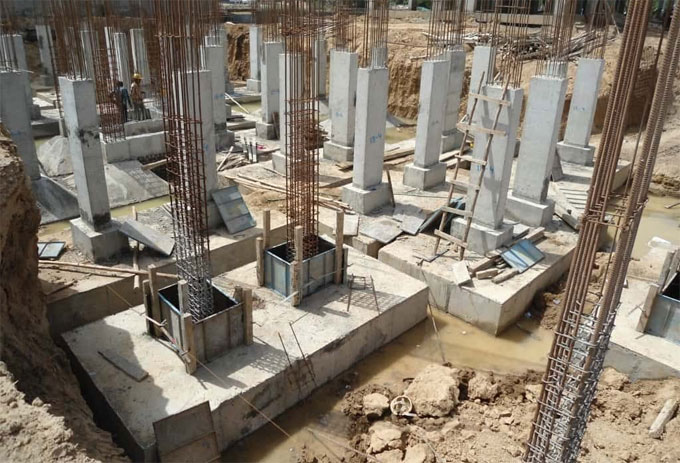Shallow foundation is applied in cases where we can find good load-bearing soil at a rather low depth. The foundation depth must meet the safety requirements of the breakdown. That is, after the application of load, the complete structure settlement will be within acceptable limits.
We can use the following four types of shallow foundations: Spread Footing, Combined Footing, Raft Foundation and Ring Foundation.
1. Spread Foundation: You need to spread the load from the column or wall to a larger area, you should use Spread Foundation. The width of the footing area is much wider than the wall or column.
The spread footing that is used to support a wall is called a wall footing or continuous footing. The top of the footing may be stepped or tapered, increasing the width gradually from wall or column to the base. They are of the following types:
a) Strip Footing: This primitive type of footing has been conventionally used in most constructions historically, before more modern inventions. They are mostly made of stones, masonry or concrete. The strip footing that is constructed of stone blocks generally has a stepped top. In modern days, however, the use of strip footing has become next to obsolete. Only in some light loading residential construction is strip footing still used.
b) Isolated Footing: When you provide footings under columns separately in a framed structure, it is called Isolated footing, pad footing or column footing.
In most cases, square footings are used under columns. However, space restrictions may force you to use rectangular footings. In case of circular columns, circular footings may be used, though it is not common. It may be used in special circumstances where construction work is difficult, or the load has to be dispersed very equally.
2. Combined Footing: When two columns are too close to make separate footings for each, then their footings are combined. These may be of the following three types:
a) Rectangular footing: These are the most common types of combined footing. It’s basically two square footings constructed together. This is used when each column is bearing the same load and of the same size.

~~~~~~~~~~~~~~~~~~~~~~~~~~
Published By
Rajib Dey
www.constructioncost.co
~~~~~~~~~~~~~~~~~~~~~~~~~~
Published By
Rajib Dey
www.constructioncost.co
~~~~~~~~~~~~~~~~~~~~~~~~~~
